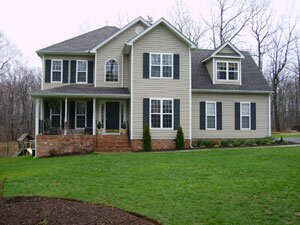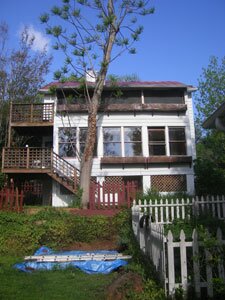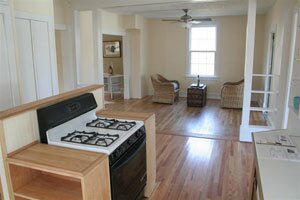REAL ESTATE- ON THE BLOCK- Downtown classic: Picking what stays and what goes

ADDRESS: 520 Seventh Street
NEIGHBORHOOD: North Downtown
ASKING: $455,000
ASSESSMENT: $313,900
YEAR BUILT: 1915
SIZE: 1,890 fin. sq. ft.
LAND: 0.119 acres
CURB APPEAL: 7 out of 10
LISTED BY: Mary H. Leavell, Keller Williams Realty, 434-220-2253
Time's passage can bring perspective and wisdom– but also bitter lessons. An aging athlete can compensate for diminished physical prowess by drawing from the experience of past games to separate strategies that work from ones that aren't worth the effort. With older houses, like this week's offering on 7th Street, the challenge is to retain the classic features of the original while undoing the disasters.
Most of the rooms in the house are the original size– which means a lot of small rooms– but over time, renovators took steps to provide a more open feel on the first floor. All the interior walls have been cut back, and between the wider doorways and the many windows, the whole floor is now filled with light and space.
In the front room, a brick fireplace is flanked by built-in shelves and a stairway against the wall. A cast-iron wood-burning stove insert could help heat the area, but part of the recent renovations included a new HVAC system, so the stove shouldn't be necessary.
While the wide doorways are a modern innovation, the kitchen has retained its more classic sensibilities through the renovations; the tiresome granite countertops and stainless steel appliances all too prevalent in current redesigns have here sensibly been replaced by classy plain white appliances and a butcher block countertop. An island surrounds a gas stove in the center of the room.
The upstairs doorways are their original dimensions to retain some privacy for the four bedrooms, which have a very 19th century attitude towards closets— that is to say, most of the rooms were designed without them. A new buyer will want to add wardrobes, even in the two rooms that actually did have closets, since one was almost completely claimed by the new HVAC system, and the other is shallow by modern standards.
The passage of time and the settling of the house have rendered the upstairs floors slightly uneven, but they've been refinished by a licensed general contractor, so they should be sound. The renovations have brought out the greenish tint in the original poplar, and it adds character and warmth.
Both the first and second floors have enclosed porches as well as decks. The porches are big enough to be used as rooms— and the one on the second level was a sleeping porch in the days before AC. The decks are smaller– big enough for just a chair or two for sitting and collecting thoughts– and on the first floor an elaborately painted wooden shutter held open with an unusual counterweight system separates the interior and exterior deck sections.
All plumbing has been replaced, and the upstairs bathroom is a fine example of older fixtures being brought up to modern standards. Unfortunately, it's the only full bathroom in the house.
While the working toilet in the basement is what's being counted as the additional half-bath, we have reservations about its actual use. Being in the unfinished basement, even its painted concrete walls can't make it a facility anyone would want to share with guests. All doesn't have to be lost, though– obviously it's possible to enlarge it and add a sink and shower, but it would be no small undertaking.
Both the basement and the attic are bigger than those in more modern houses– that is, the rare modern houses that even have a basement or attic. But also not normally seen in brand-new developments are cracks in the walls like the ones in a few rooms here that have been repaired and painted over.
From the absent closets to the butcher block counter, this house represents some of yesterday and some of today. Let's hope new owners who decide to make their own modifications understand the value in keeping what's irreplaceable as they strive to bring the place into the 21st century.
One important aspect of the house that can't be changed is the location. While dead ends are usually quiet streets, this house is behind First Presbyterian Church on Park Street, next to the church parking lot. This could be problematic for buyers who aren't members of the congregation, especially during services or other functions that create lots of traffic. Fortunately, the neighbors on the other side–in the nearby cemetery– are, for the most part, pretty quiet.


Photos by Rosalind Warfield-BrownEach week, a brave local seller invites the Hook to provide an impartial, warts-and-all look at their real estate listing. E-mail yours today!
#